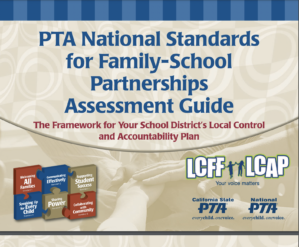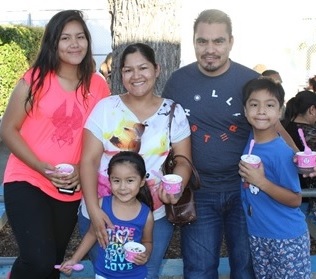As your PTA develops its plans for the 2023-24 school year, it’s important for education administrators and PTA leaders to nurture PTA advocacy efforts together.
PTA leaders understand that speaking up for children – the essence of advocacy – is essential to ensure that every child has access to a quality education and the support they need to thrive. California’s school principals and district superintendents benefit from having robust advocacy efforts supported in their schools because most know that strong family engagement improves education outcomes for students. Working together, parents, PTA leaders, teachers, and administrators can mobilize around actions that will improve the education, health, and well-being of all children and youth.
What’s meaningful to the members of your community? Advocacy is different at each school. Policymakers need to hear from their constituents about the impact of their policies. That’s true at every level, from your local school and district, to city and county governments, to state and federal legislators. Also consider who doesn’t have a seat at the table: Who are you NOT hearing from?
Keep in mind that with PTA, you are never alone. Whether it’s grassroots efforts designed to give ordinary people a voice in the political process, or direct advocacy activities to communicate with policy decision makers, you have an ally in PTA! You have people who care about what YOU care about.
California State PTA has policies, experts, tools, and resources to help you make a difference on the issues that concern you. A great place to start is the Advocacy section of the California State PTA website. Now – at the start of the school year – is the time to engage your volunteer base and leverage your resources. You can amplify your collective voice effectively to benefit your community’s children, youth, and families.
Start by selecting a PTA leader to head up the advocacy efforts of your PTA unit, council, or district. Make sure that their contact information is submitted to California State PTA so that they can be a part of state-level advocacy programs throughout the year.
Invest in the growth and development of your advocacy program by ensuring that your advocacy leaders and local team members can participate in California State PTA programs that support their efforts. Examples include advance budgeting and planning to attend the California State PTA Legislation Conference (January 22-23, 2024, in Sacramento), training and workshops available at the California State PTA Convention (May 3-5, 2024 in Ontario), and utilizing the various online resources and webinars designed to inform, educate, and empower advocates to take action that makes a difference.
Other ways that schools, school districts, and PTA leaders can work together to nurture advocacy efforts in support of common goals include:
Annual LCAP process – Encourage all members of your community to contribute to the development of your Local Control and Accountability Plan by offering multiple opportunities to collect input and listen to what families need from their public schools through local PTAs. Having PTA host an event at each school can result in more meaningful suggestions coming from a broader cross-section of your community than limited electronic surveys allow. PTA gatherings can also be helpful in determining the efficacy of LCAP implementations.
Election Year 2024: Promote voter engagement – The 2024 California State Primary Election, which will include the presidential primary, takes place early next year. Promote civic engagement by holding a voter registration drive with a special emphasis on encouraging eligible high school seniors to participate. Online pre-registration is now available for eligible 16- and 17-year-olds by visiting registertovote.ca.gov. California youth who pre-register to vote will have their registration become active once they turn 18 years old. Pre-registration does not change the voting age, which is 18. Instead, it allows eligible Californians ages 16 or 17 to complete the online voter registration form providing sufficient time and opportunity to get ready to vote.
All California active registered voters will receive a vote-by-mail ballot for the March 5, 2024, California Primary Election. The last day to register to vote is February 20, 2024. You can check your voter status online at voterstatus.sos.ca.gov.
Ballot measures – If your school district is seeking funds through a ballot measure, California State PTA can offer guidance on how your local PTA can help to inform the public about the relevant issues concerning the measure, or even help secure the passage of a local school district facilities bond or local parcel tax election.
http://toolkit.capta.org/advocacy/election-campaigns/school-bonds-and-other-ballot-measure-campaigns/
Join us!
Both California State PTA and National PTA regularly engage in direct legislative advocacy efforts to effect policy changes that benefit all children. One of the key ways that parents, teachers, principals, and administrators can contribute to strengthening our collective voice is to be sure to join PTA at the start of each school year. We’re stronger together!




 As PTA members, we know how important family engagement is for student and school success.
As PTA members, we know how important family engagement is for student and school success. 
 This article was written by Kathleen Fay, member of the California State PTA Legislation Team.
This article was written by Kathleen Fay, member of the California State PTA Legislation Team.